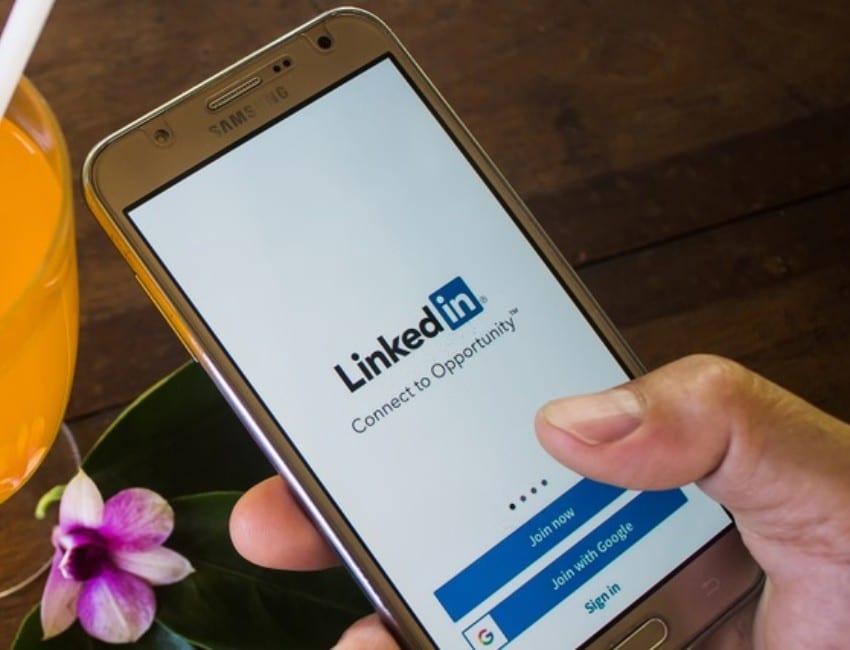
LinkedIn gets free verified badges for workplace
An update for LinkedIn
LinkedIn, which is now controlled by Microsoft, is introducing a free mechanism for users to verify their identity and place of employment. The alternatives for verification include using CLEAR to demonstrate your identity, confirming your workplace using an email address, and obtaining free digital workplace IDs through Microsoft’s Entra-verified ID platform.
You won’t have to pay to acquire verifications that will appear on your LinkedIn page, unlike Instagram, Facebook, or Twitter. If your organization currently uses Entra, you can authenticate your workplace by using a company-issued email address or by using Microsoft Entra.
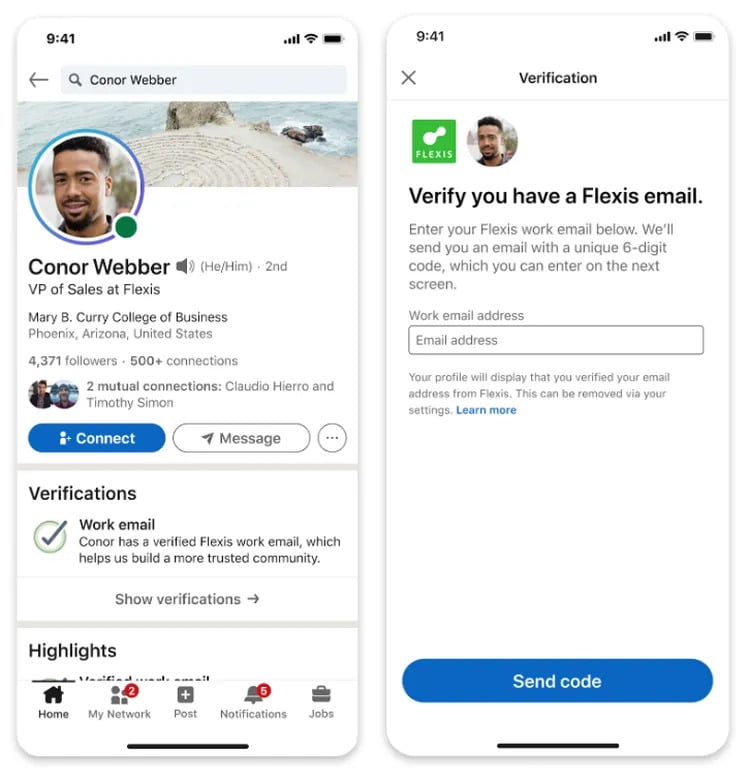
Authenticate your LinkedIn experience!
LinkedIn and CLEAR have teamed up to make it possible for you to securely authenticate your identity if you wish to. If you use CLEAR, you’ll be able to show on your LinkedIn profile that your identity has been verified using a US government-issued ID and US phone number.
LinkedIn will emphasize verifications on profiles with a green and blue tick, but it doesn’t seem to be going above to offer a badge that appears next to your name on all of LinkedIn.
HR to home!
Since hiring has frequently taken place remotely over the past few pandemic years and more organizations are utilizing cloud technologies, it is obvious that online credential verification is necessary. Since it is all based on open standards, Microsoft’s Entra Verified ID system, which is now utilized by LinkedIn, can be integrated with a wide range of identification and HR systems.
Also Read: Doge takes over Twitter as Elon Musk replaces app’s iconic bird
As long as they work for one of the supported over 4,000 firms, all LinkedIn members can now request verification via company email. At the end of April, the Microsoft Entra verification will be made available to 2 million LinkedIn users.
Have something to add to the story? Comment down below!

Doge takes over Twitter as Elon Musk replaces app’s iconic bird
Doge takes over the blue Twitter bird
The social media platform has changed its recognisable blue bird logo to a doge meme in what might be a late April Fools’ joke or Twitter CEO Elon Musk exercising his belief that nothing is more eye-catching than a dog picture.
Doge meme aka Kabosu Shiba Inu!
The Shiba Inu named Kabosu, who served as the model for the notorious doge meme, is featured right at the top of the Twitter homepage. The first instance of the meme was in 2010, when an amusing image of Kabosu went popular online. People began calling it “doge,” which ultimately served as the model for the 2013-founded cryptocurrency “Dogecoin.”
Musk also posted a screenshot with the caption “As promised”, showing a conversation between him and a Twitter user where he suggested Musk “just buy Twitter” and “change the bird logo to a doge”. To this, Musk responded: “Haha that would sick”.
Given that the update was released in the midst of a [$258 million racketeering lawsuit][2] accusing him of running a pyramid scam to promote Dogecoin, Musk made a brave move.
To commemorate the news, DogeCoin’s official Twitter account published a very 2010 meme.
Here comes the trolling…
Musk’s most recent action has surprised many online users.
Another one shares,
Change the name already Musk,
Calling him smart!
The recognisable blue bird is already missed. No matter how cute the doge is, we’re #TeamBlueBird.
Have something to add to the story? Comment down below!

China’s Baidu cancels the public debut of a program similar to ChatGPT
China cancels rival version of ChatGPT “Baidu”
Reuters, March 27, Beijing – Chinese search engine giant Baidu (9888.HK) has cancelled a livestreamed event that was scheduled to introduce its ChatGPT-like “Ernie bot” to the public and media on Monday.
The webcast, which was originally slated for Monday afternoon, has been changed to a private meeting with the first group of businesses evaluating the product, according to a statement released by Baidu on Monday morning.
Also Read: A new era for AI and Google Workspace
The business stated that the format modification was necessary to accommodate the “strong demand” from the 120,000 companies that sought to test the Ernie bot. It is also the first of several sessions behind closed doors.
The declination
Initial news of the cancellation caused Baidu’s Hong Kong-listed shares to decline as much as 4.5% on Monday morning.
China’s version of ChatGPT, known as Ernie bot, was introduced on March 16 by Baidu CEO Robin Li. During a live-streamed presentation, Li took journalists through a number of pre-recorded demos showcasing the Chinese chatbot’s various skills.
Also Read: Google launches ChatGPT rival AI powered chatbot ‘Bard’
While the presentation was still being live-streamed, the stock price of the company fell. However, it soon recovered. Thanks in part to the Chinese corporate sector’s high demand for generative AI the technology that underpins goods like Ernie bot and ChatGPT.
Have something to add to the story? Comment down below!

A new era for AI and Google Workspace
A new era for Google Workspace with AI
Google has created practical tools that people use every day for almost 25 years, including Search, Maps, Gmail, and Documents in Google Workspace. Building goods that have earned a valuable position in people’s lives has benefited greatly from AI.
Furthermore, with features like Smart Compose and Smart Reply, summaries for Documents, making users look more professional in meetings, and staying safe from malware and phishing attempts, developments in AI are already assisting our 3 billion users in saving more time across our whole productivity suite.
AI feature for Google docx
Users of Workspace will soon be able to employ generative AI to create, connect, and interact in ways that have never been possible thanks to Google. To select testers, Google is releasing the first set of writing features driven by AI in Documents and Gmail.
The goal of Workspace is to genuinely link people so they can build, create, and grow together. Recent developments in generative AI are giving us new approaches to accomplish this goal.
Throughout the year, Google starts rolling out new generative-AI experiences to its trusted testers.
These functions will enable you to:
- Draft, reply, summarize, and prioritize your Gmail.
- Brainstorm, proofread, write, and rewrite in Docs.
- Bring your creative vision to life with auto-generated images, audio, and video in Slides.
- Go from raw data to insights and analysis via auto-completion, formula generation, and contextual categorization in Sheets.
- Generate new backgrounds and capture notes in Meet to enable workflows for getting things done in Chat.
AI generative writings in Google Gmail and Docs
Artificial AI is being incorporated into Documents and Gmail to aid users in beginning their writing. Imagine being new in a world of remote internships and even newer to writing and how much is this feature going to help new writers!

Workspace saves you the time and work of writing that first version, whether you’re a busy HR professional who needs to produce personalised job descriptions or a parent preparing the invitation for their child’s pirate-themed birthday party. Simply type the subject you want to write about, and a draught will be created for you right away. Moreover, you can keep editing and refining with your cooperative AI partner. Furthermore, adding more suggestions as necessary.
Google Gmail is revolutionizing!
Google is offering new generative AI capabilities to assist users in rewriting for these typical scenarios, including composing a challenging email and many more. You can select the “I’m feeling lucky” option in Gmail if you want to let AI test out a brand-new, playful voice. Moreover, there is a formalise tab in the email box that the user may use to begin composing emails.
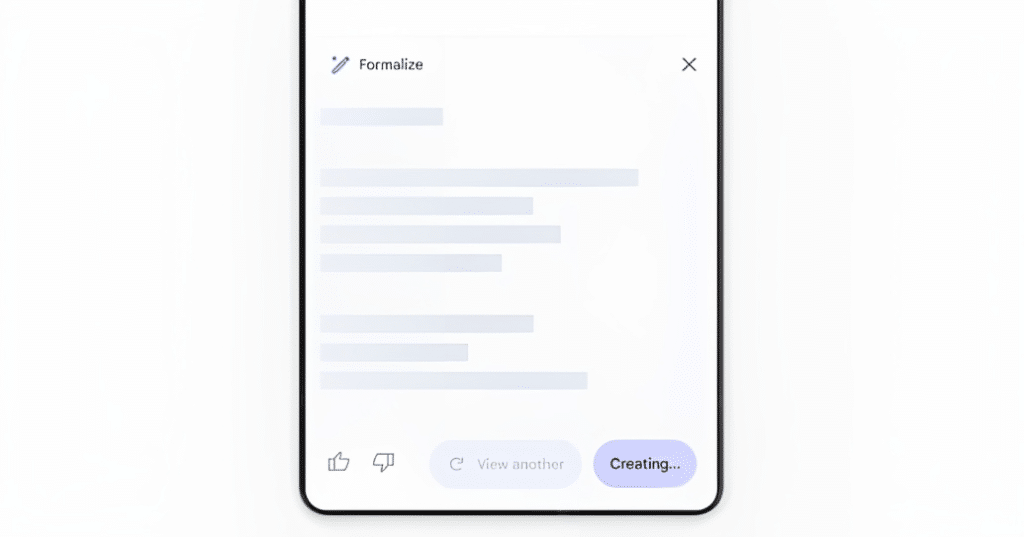
User Control
The AI Generative features follow Google’s AI Principles, which put the user in charge by letting AI make suggestions that they may approve, amend, and change. In addition, Google is providing the necessary administrative controls so that IT may establish the appropriate rules for their company.
Have something to add to the story? Comment down below!
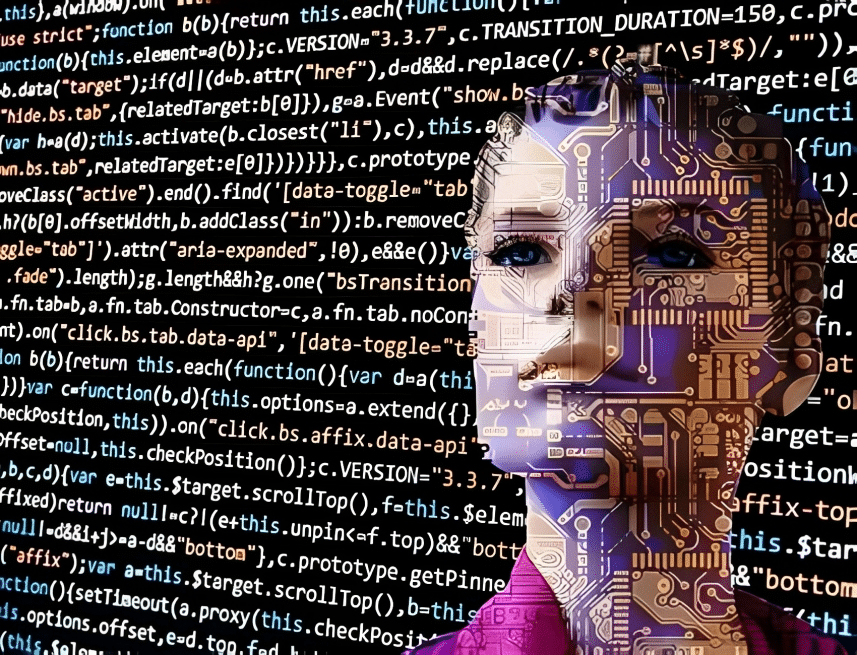
Google launches ChatGPT rival AI powered chatbot ‘Bard’
Google launches AI powered Bard chatbot,
To compete with ChatGPT, Google is releasing the AI powered Bard chatbot. Before being made available to the general public in the upcoming weeks. According to the company, Bard will be used by a group of testers first.
What is Bard?
Bard is based on Google’s large language model Lamda, which one engineer said had responses that were so similar to humans’ that he thought it might even be sentient. The tech behemoth also unveiled new AI search engine tools.
AI chatbots are made to find information and respond to queries. The most well-known example is ChatGPT. They use the internet as a vast repository of knowledge, but there are worries that it may also contain offensive content and misinformation.
“Bard seeks to combine the breadth of the world’s knowledge with the power, intelligence, and creativity of our large language models,” wrote Google boss Sundar Pichai in a blog.
Although Mr. Pichai emphasised that he wanted Google’s AI services to be “bold and responsible,” he did not go into detail about how Bard would be stopped from sharing offensive or harmful content.
According to him, the platform will initially run on a “lightweight” variation of Lamda that consumes less power and allows for simultaneous use by more users.
Also Read: The tech companies mass layoff in 2023
Following widespread rumours that Microsoft would soon integrate the AI chatbot ChatGPT into its search engine Bing as a result of a multi-billion dollar investment in the company that developed it, OpenAI, Google’s announcement comes as a response.
ChatGPT
Based on data from the internet as it existed in 2021, ChatGPT can respond to questions and fulfil requests in text form. It can produce student essays, news articles, songs, speeches, and marketing copy.
Although it currently costs the company a few pennies each time someone uses it, it is currently free for users. OpenAI recently disclosed a paid tier to go along with free access.
But experts agree that chatbots’ ultimate goal is to replace pages of web links with a single, conclusive response in internet searches.
Also Read: Google engineer says Lamda AI system may have its own feelings
According to Sundar Pichai, people are now using Google search to pose more complex queries.
“AI can be helpful in these moments, synthesizing insights for questions where there’s no one right answer,” he wrote.
“Soon, you’ll see AI-powered features in Search that distil complex information and multiple perspectives into easy-to-digest formats, so you can quickly understand the big picture and learn more from the web.”
Have something to add to the story? Comment down below!

Earth’s inner core may have stopped turning and could go into reverse
Earth’s core stops rotating!
According to new research, the inner core of the Earth’s rotation may have stopped or even reversed.

The crust, mantle, and inner and outer cores make up the Earth. The liquid outer core separates the solid inner core from the semi-solid mantle. This allows the inner core to rotate at a rate different from the Earth’s rotation. The solid inner core is located about 3,200 miles below the Earth’s crust.
What is happening with mother Earth?
Earth’s core is roughly the size of Mars and has a radius of close to 2,200 miles. It makes up about one-third of the mass of the planet and is primarily composed of iron and nickel.
Yi Yang, an associate research scientist at Peking University, and Xiaodong Song, chair professor at Peking University, used analysis of seismic waves from earthquakes that have passed through the Earth’s inner core along comparable paths since the 1960s to determine how quickly the inner core is spinning. Their findings are available in the Nature Geoscience Journal.
The change in Seismic records
They claimed what they discovered was unexpected. Seismic records, which had previously changed over time, had hardly changed as of 2009. They claimed that this indicated a pause in the inner core rotation.
The inner core may be experiencing a turning-back, according to their study. “We show surprising observations that indicate the inner core has nearly ceased its rotation in the recent decade,” they wrote.
“When you look at the decade between 1980 and 1990 you see clear change but when you see 2010 to 2020 you don’t see much change,” added Song.
Magnetic field and deep-earth process
The magnetic field produced by the outer core propels the spin of the inner core. Which is counterbalanced by the mantle’s gravitational pull. Understanding the rotation of the inner core may help us understand the interactions between these layers and other deep-earth processes.
Also Read: The tech companies mass layoff in 2023
However, Hrvoje Tkalcic, a geophysicist at the Australian National University who was not involved in the study, noted that there is disagreement regarding the speed of this rotation and whether it varies.
“The inner core doesn’t come to a full stop,” he said. The study’s finding, he said, “means that the inner core is now more in sync with the rest of the planet than a decade ago when it was spinning a bit faster.”
“Nothing cataclysmic is happening,” he added.
Also Read: Twitter’s paid blue tick re-launches after pause
Song and Yang argue that, based on their calculations, a small imbalance in the electromagnetic and gravitational forces could slow and even reverse the inner core’s rotation. They believe this is part of a seven-decade cycle. Moreover, the turning point prior to the one they detected in their data around 2009/2010 occurred in the early 1970s.
Have something to add to the story? Comment down below!

The tech companies mass layoff in 2023
Tech Layoffs 2023
Tech job cuts made headlines in 2022, and it appears that trend will continue in 2023 as well, with major corporations like Amazon and Salesforce already reducing staff numbers.
There weren’t many significant tech companies that managed to avoid layoffs last year; among them were Twitter, Tesla, Shopify, Microsoft, and Netflix. Some of these companies made cuts more than once.
Also Read: Twitter’s paid blue tick re-launches after pause
Spotify
600 employees, or about 6% of Spotify’s entire workforce, will be let go, the company has announced. Spotify CEO Daniel Ek wrote in an internal memo, “In retrospect, I was too ambitious in investing ahead of our revenue growth. And as a result, we are today reducing our overall employee base by about 6%. 40 employees had previously been let go by the company in October after its exclusive podcasts were reduced.
Alphabet – Google
Alphabet, the parent company of Google, announces massive layoffs, terminating 12,000 employees. The reductions will impact the product, engineering, and recruiting teams, claims Reuters. Sundar Pichai, CEO of Google, wrote in an email to the company’s employees, “I am confident about the huge opportunity in front of us thanks to the strength of our mission, the value of our products and services, and our early investments in AI.”
Unlike its rivals, Alphabet/Google didn’t make any significant layoffs in 2022, which set it apart from the pack. Even Google employees don’t seem to be safe any longer.
Microsoft
Microsoft announced 10,000 job losses after persistent rumours surfaced. Less than 5% of the company, according to CEO Satya Nadella, would be impacted, and hiring would still go forward in crucial strategic areas. The company cites “macroeconomic conditions and shifting customer priorities” as the causes of the job cuts.
Although the company announced several rounds of job cuts last year, none were as significant as this most recent one.
Also Read: Google Play Store to shut down for Pakistani users?
Meta
It appears that Meta has once again removed job offers from candidates before they could begin their new positions, as we previously reported. Meta confirmed that it had to revoke some job offers after TechCrunch first broke the news. Although precise numbers are unknown, engineer Gergely Orosz claims to have heard of 20 affected individuals “so far.”
There are rumours that Twitter kept up its massive layoffs into the new year, making about a dozen cuts to its offices in Dublin and Singapore. Twitter’s Head of Trust and Safety Ella Irwin told Bloomberg that, “For example, it made more sense to consolidate teams under one leader (instead of two).”
Hundreds, including some of the sector’s biggest names, have revealed redundancies in recent weeks.
Have something to add to the story? Comment down below!
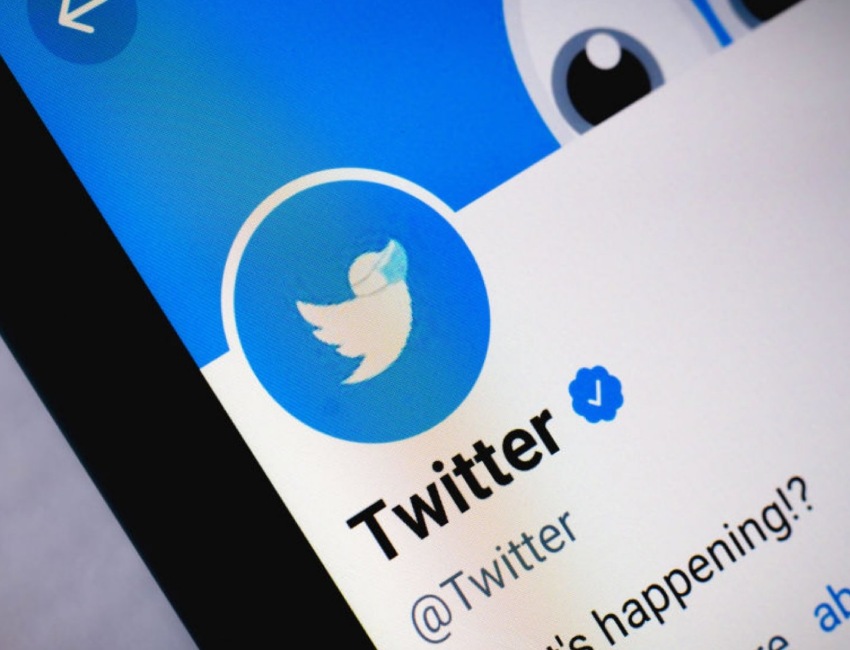
Twitter’s paid blue tick re-launches after pause
Twitter relaunches blue-tick after pause
On Monday, the Twitter’s paid verification feature is now available again. It was halted last month after being inundated with impersonators. It is still $8 per month. However, there is a $11 fee for those who use the Twitter app on Apple devices.
Elon Musk, the owner of Twitter, has previously stated in tweets that he dislikes the commission fee Apple charges on in-app purchases. One of Twitter Blue’s extra features is an edit button.
Also Read: Twitter gets into chaos after wave of blue tick impersonations
Many Twitter users have long requested this feature. Though some argue that it increases the possibility of disinformation spreading if a tweet is altered after it has been widely shared.
According to the platform, Blue-tick subscribers will also see fewer ads, Furthermore, have their tweets amplified above others. Moreover, be able to post and view longer, higher-quality videos.
Previously, a blue tick was used as a badge of authenticity as a verification tool for high-profile accounts. Twitter gave them away for free, but only the company decided who got one.
Mr. Musk claims that this was unjust.
Also Read: New wave of resignations and memes hits Twitter after Musk ultimatum
Those who had a blue tick under the previous regime still have them, but if the tick is pressed, a message appears saying the account is a “legacy verified account” and “may or may not be notable.”
According to Twitter’s own account, those check marks will eventually be replaced with either gold or grey badges. Subscribers who change their names or display photos will lose their blue tick under the new system. They can regain until the account is reviewed by Twitter.
Fake blue ticks!
The service had a rocky start in November, when people began impersonating big brands and celebrities and paying for the blue-tick badge to appear authentic.
Many people pretended to be Elon Musk.
Also Read: Elon Musk says Twitter blue tick to be revamped
In one case, a user claiming to be from the US pharmaceutical company Eli Lilly tweeted “insulin is free,” causing the real company’s share price to plummet; however, Eli Lilly has since agreed that insulin prices may indeed be lower.
However, anecdotally, quite a few accounts appeared to take advantage of the opportunity to subscribe for legitimate reasons. Furthermore, Musk also claims that Twitter accounts that have been inactive for a certain period of time will be deleted. This has upset those who say they treasure the accounts of loved ones who have died.
Unlike Facebook, Twitter users cannot appoint someone to manage their accounts after they die, though state executors can make requests.
Have something to add to the story? Comment down below!
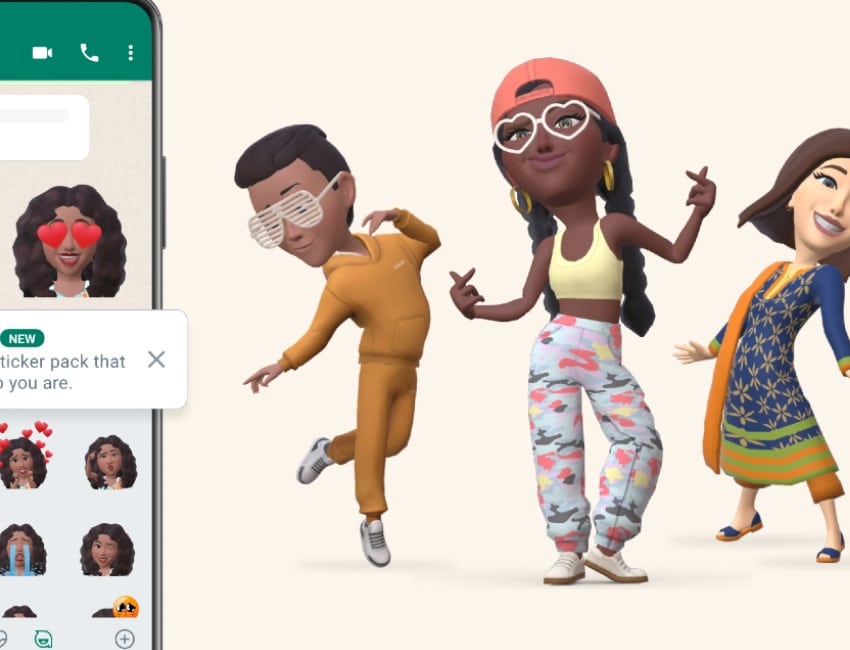
WhatsApp starts rolling out 3D avatars
WhatsApp rolls out 3D avatars
WhatsApp has begun rolling out 3D avatars for its users worldwide, which can be used as profile photos or custom stickers — months after they debuted on Instagram, Facebook, and Messenger.
Also Read: Mark Zuckerberg reveals new privacy features for WhatsApp
Also Read: New wave of resignations and memes hits Twitter after Musk ultimatum
Mark Zuckerberg announces avatars update
Meta CEO Mark Zuckerberg announced on Facebook on Wednesday that avatars are coming to WhatsApp. The announcement comes after months of beta testing, which was first reported in June by WhatsApp beta tracker WABetaInfo.
WhatsApp stated in a blog post that users could use personalised avatars as their profile photo or choose from one of 36 custom stickers representing various emotions and actions. WhatsApp’s avatar stickers resemble Snap’s Bitmoji or Apple’s Memoji stickers.
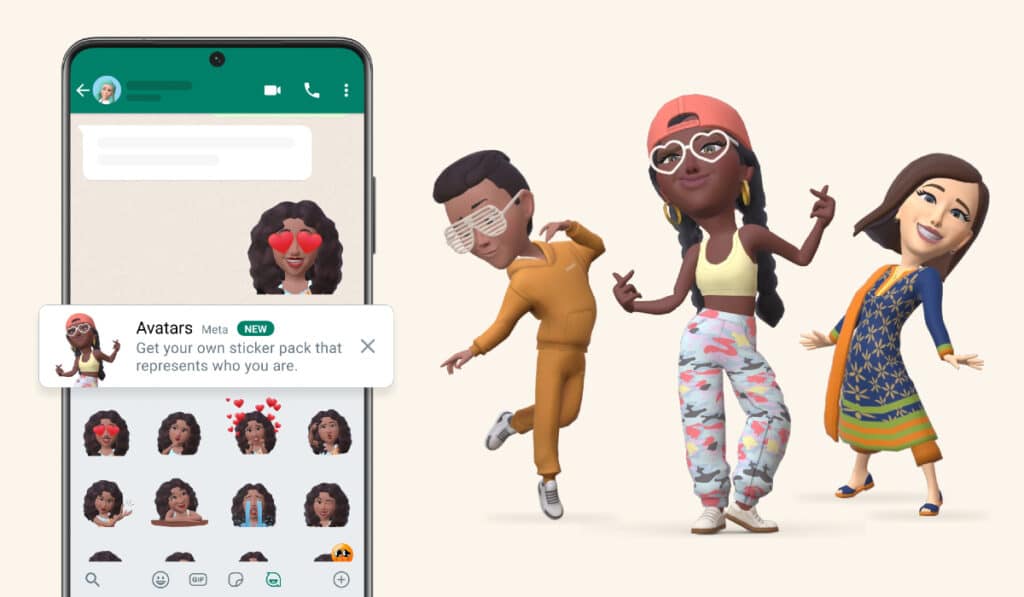
“Your avatar is a digital version of you that can be created from billions of combinations of diverse hair styles, facial features, and outfits,” the company behind the popular instant messaging app said.
WhatsApp also stated that users would gradually receive style enhancements such as lighting, shading, and hair style textures.
Once the feature is available, users will be able to create their own avatars on WhatsApp by going to the Settings menu. According to a FAQ page, the messaging app will also get a “Use Avatar” option in the profile photo settings, allowing users to use their virtual lookalike as a profile photo.
Bitmoji style 3D avatars
Meta introduced Bitmoji-style 3D avatars to Facebook and Messenger in 2019. The initial rollout was limited to Australia, New Zealand, Europe, and Canada, but the social networking behemoth later expanded its presence to the United States in 2020. In late January, Instagram received avatars as well.
Also Read: Google Play Store to shut down for Pakistani users?
Avatars coming to Facebook and Instagram?
WhatsApp also confirmed that, for the time being, you cannot use your WhatsApp avatar on Instagram or Facebook, nor can you use your Instagram or Facebook Meta avatar on WhatsApp. This means that in order to use an avatar on WhatsApp, you must first create a new avatar within WhatsApp.
Have something to add to the story? Comment down below!
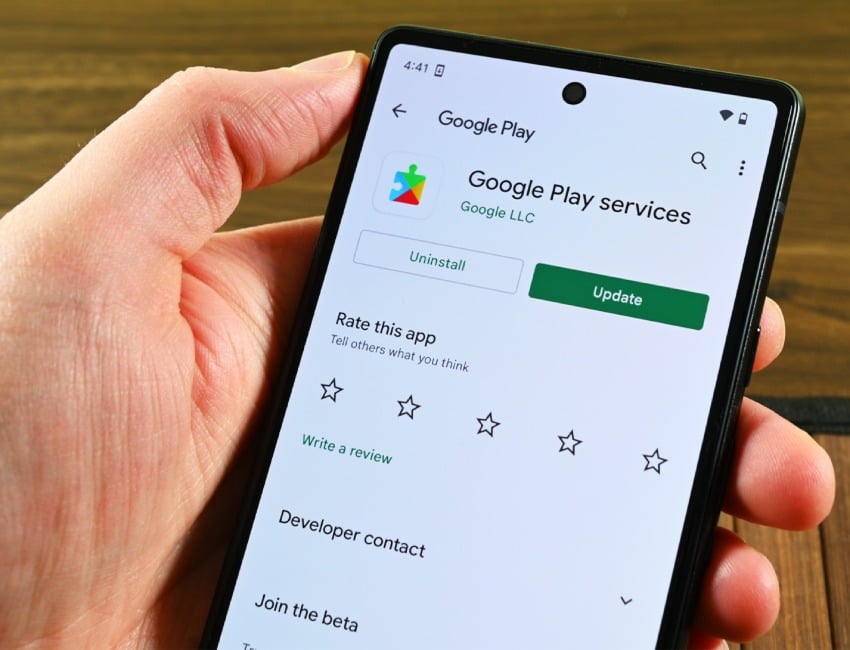
Google Play Store to shut down for Pakistani users?
Is Pakistan getting technical down?
After the State Bank of Pakistan blocked the payment of $34 million to international service providers, mobile customers will be unable to access Google Play Store services beginning December 1, 2022.
The central bank discontinued the use of the direct carrier billing (DCB) mechanism.
Furthermore, halting the payment of $34 million per year to overseas service providers such as Google, Amazon, and Meta.
Also Read: Social media users report bizarre Facebook glitch
How this will affect mobile users in Pakistan?
Customers in Pakistan will now be required to download Google and other foreign apps in order to make purchases with credit or debit cards. However, because the credit card option is limited to a certain number of consumers, the majority of mobile users may be unable to download apps from the Google Play Store.
In light of the country’s current liquidity crisis, the Pakistan Telecommunication Authority (PTA), the Ministry of Information Technology and Telecommunication, and four cellular mobile operators (CMOs) unanimously wrote a joint letter to the SBP on Friday, requesting that it reconsider its decision to revoke the DCB mechanism for payment of the dollar fee.
Will apps not be available to update or download?
Google services such as app downloads will not be available, according to confirmation from reputable government sources. They notified the appropriate authorities that a $34 million payment was past due and that if it was not paid, their Google App Store download services would be discontinued.
The DCB (direct carrier billing) blockade and the chaos
The four mobile operators sent a joint letter to the government, stating that the telecom industry, along with other significant contributions in the form of taxes, duties, and other levies, is one of the largest contributors to foreign direct investment.
Also Read: New wave of resignations and memes hits Twitter after Musk ultimatum
The downfall of the IT industry in Pakistan
The IT designation of telecom providers was removed by the State Bank of Pakistan months ago. Furthermore, it was suggested that cases be sent to SBP for approval individually.
As a result, mobile operators complained about delays in obtaining approvals, which caused a disruption in critical services.
Will Google, Amazon and META won’t work in Pakistan?
Google, Amazon, and Meta, are suffering as a result of nonpayment and are likely to cease providing their services. As a result, telecom and internet users will be unable to meet their needs through digital platforms such as digital banking, e-commerce, e-education, and e-health, which rely on cloud infrastructure and require licences for both applications and web-based platforms, which will be severely impacted.
Selling digital platforms will be difficult due to a lack of distribution support and interest from market players. As a result, businesses, services, and goods outside of the digital sphere will be affected. For all businesses, products, and services, digital marketing is currently the most effective channel.
“Any potential outage of such digital services due to non-payments would create a great deal of negativity in the world about Pakistan in this age of social media and should be avoided at all costs,” the letter stated.
A sigh of relief?
The Google Play services will not be shut down after December 1, 2022, according to the country’s IT ministry. Thecentral bank has been asked to restore the mechanism that allows such payments to be made to international companies.
He further said that the finance minister should take immediate notice of the matter. Furthermore, direct the State Bank to continue the payment.
We hope the tech chaos or “techaos” will be settled in a few days!
Have something to add to the story? Comment down below!




